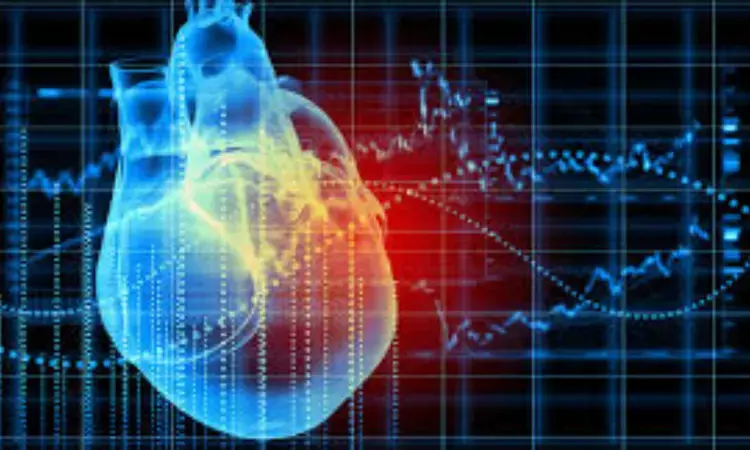- Home
- Medical news & Guidelines
- Anesthesiology
- Cardiology and CTVS
- Critical Care
- Dentistry
- Dermatology
- Diabetes and Endocrinology
- ENT
- Gastroenterology
- Medicine
- Nephrology
- Neurology
- Obstretics-Gynaecology
- Oncology
- Ophthalmology
- Orthopaedics
- Pediatrics-Neonatology
- Psychiatry
- Pulmonology
- Radiology
- Surgery
- Urology
- Laboratory Medicine
- Diet
- Nursing
- Paramedical
- Physiotherapy
- Health news
- Fact Check
- Bone Health Fact Check
- Brain Health Fact Check
- Cancer Related Fact Check
- Child Care Fact Check
- Dental and oral health fact check
- Diabetes and metabolic health fact check
- Diet and Nutrition Fact Check
- Eye and ENT Care Fact Check
- Fitness fact check
- Gut health fact check
- Heart health fact check
- Kidney health fact check
- Medical education fact check
- Men's health fact check
- Respiratory fact check
- Skin and hair care fact check
- Vaccine and Immunization fact check
- Women's health fact check
- AYUSH
- State News
- Andaman and Nicobar Islands
- Andhra Pradesh
- Arunachal Pradesh
- Assam
- Bihar
- Chandigarh
- Chattisgarh
- Dadra and Nagar Haveli
- Daman and Diu
- Delhi
- Goa
- Gujarat
- Haryana
- Himachal Pradesh
- Jammu & Kashmir
- Jharkhand
- Karnataka
- Kerala
- Ladakh
- Lakshadweep
- Madhya Pradesh
- Maharashtra
- Manipur
- Meghalaya
- Mizoram
- Nagaland
- Odisha
- Puducherry
- Punjab
- Rajasthan
- Sikkim
- Tamil Nadu
- Telangana
- Tripura
- Uttar Pradesh
- Uttrakhand
- West Bengal
- Medical Education
- Industry
Digital biomarker derived from machine learning has potential to diagnose CAD: Lancet

USA: "Digital biomarker" derived from new machine learning (ML) holds the potential to diagnose coronary artery disease (CAD) from EHR (electronic health record) data and characterize its features and the risks those entail, researchers state in a study published in The Lancet.
The use of artificial intelligence (AI) to describe the disease's spectrum could have implications for the delivery of precision medicine. Machine learning-derived models could lead to better screening, diagnostics, and disease management.
A binary diagnosis of CAD does not preserve the disease's complexity or quantify its severity or associated death risk; hence a quantitative marker of coronary artery disease is warranted. Considering this, Iain S Forrest from Icahn School of Medicine at Mount Sinai in New York, USA, and colleagues assessed a quantitative marker of CAD derived from the probabilities of an ML model in a cohort study.
For this purpose, the researchers developed and validated a CAD-predictive machine-learning model by utilizing 95 935 electronic health records and examined its probabilities as in-silico scores for coronary artery disease (ISCAD), the lowest probability being 0 and highest being 1, in people with longitudinal biobank cohorts. They measured the association of ISCAD with clinical outcomes—namely, obstructive coronary artery disease, coronary artery stenosis, coronary artery disease sequelae, multivessel coronary artery disease, and all-cause death.
The study revealed the following results:
· Among 95 935 participants, 60 186 were from the UK Biobank (median age 62 years; 58% were female; 14% with diagnosed coronary artery disease), and 35 749 were from the BioMe Biobank (median age 61 years; 59% were female; 14% were with diagnosed CAD).
· The model predicted CAD with an area under the receiver operating characteristic curve of 0·95 (sensitivity of 0·94 and specificity of 0·82) and 0·93 (sensitivity of 0·90 and specificity of 0·88) in the BioMe validation and holdout sets, respectively, and 0·91 (sensitivity of 0·84 and specificity of 0·83) in the UK Biobank external test set.
ISCAD represented coronary artery disease risk from known risk factors, polygenic risk scores, and pooled cohort equations.
· There was a quantitative increase in coronary artery stenosis with ascending ISCAD quartiles, including the risk of multivessel coronary artery disease, obstructive CAD, and major coronary arteries stenosis.
· There was a stepwise increase in hazard ratios (HRs) and prevalence of all-cause death over ISCAD deciles (decile 1: HR 1·0, 0·2% prevalence; decile 6: 11, 3·1% prevalence; and decile 10: 56, 11% prevalence). A similar trend was seen for recurrent myocardial infarction.
· 46% of undiagnosed people with high ISCAD (≥0·9) had clinical proof of coronary artery disease according to the 2014 Task force guidelines by the AHA (American Heart Association)/ ACC (American College of Cardiology).
" The authors wrote, "Machine learning based on electronic health record was used to generate an in-silico marker for coronary artery disease that can quantify atherosclerosis and death risk non-invasively on a continuous spectrum, and identify underdiagnosed individuals."
Reference:
Iain S Forrest, Ben O Petrazzini, Áine Duffy, Joshua K Park, Carla Marquez-Luna,Daniel M Jordan, Published: December 20, 2022 DOI:https://doi.org/10.1016/S0140-6736(22)02079-7
Dr Kamal Kant Kohli-MBBS, DTCD- a chest specialist with more than 30 years of practice and a flair for writing clinical articles, Dr Kamal Kant Kohli joined Medical Dialogues as a Chief Editor of Medical News. Besides writing articles, as an editor, he proofreads and verifies all the medical content published on Medical Dialogues including those coming from journals, studies,medical conferences,guidelines etc. Email: drkohli@medicaldialogues.in. Contact no. 011-43720751


